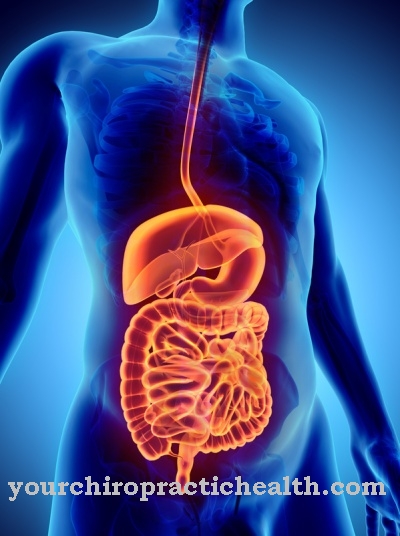The Opening phase is the introductory phase of childbirth. It is characterized by the onset of the first contractions, which open the cervix and cause the amniotic sac to burst.
What is the opening phase?

A birth is divided into several phases. Weeks before the birth, the first more or less noticeable labor pains set in. These can be improved by supplying heat and ensure that the stomach sinks visibly lower. The baby slips deeper in the direction of the birth canal as a result of these contractions, pre- or exercise contractions.
While these contractions do not affect the cervix and do not induce labor, the first cervical contractions occur during the opening phase. They tend to get stronger through warmth, which makes them easy to distinguish from previous contractions. Opening pains are characteristic of the opening phase and are synonymous with the beginning of the birth.
During the opening phase, the cervix gradually widens to an opening about 10 cm in size, so that the baby can be pressed through the birth canal through the birth canal with the subsequent contractions. As soon as this happens, one speaks of the expulsion phase.
The opening phase is also the longest phase of childbirth, as it can usually take several hours or even days to dilate the cervix sufficiently. The opening phase is the right time to administer painkillers so that the woman is not too exhausted from the opening contractions.
Function & task
The cervix is the place where the vagina meets the uterus. During the pregnancy she locked the baby securely and tightly in the uterus and allowed neither germs nor foreign bodies to enter. But now the baby has to be pressed through the vagina into the outside world - this is only possible if the cervix expands sufficiently for it.
So the main purpose of the opening phase is to gradually open the cervix so that the baby can pass it. Only then do the much more intense pressure contractions make sense. During the opening phase, the opening labor that affects the cervix simultaneously ensures that the amniotic sac bursts. Although there are very rare cases in which babies are born in the intact amniotic sac, the amniotic fluid usually comes off beforehand.
For the accompanying midwives, the examination of the amniotic fluid serves to determine whether the baby is doing well. Discoloration would indicate something is wrong and that help is needed.
The opening phase ends when the cervix has widened to around 10 cm, as the baby can now be pressed into the birth canal.
Illnesses & ailments
The opening phase is a long and critical phase as it prepares the actual birth. The first possible complication is the so-called fall birth, in which the opening phase is unusually fast. In the case of sudden births, the child is born in a fraction of the time: the cervix opens faster than expected, and the expulsion phase begins after a very short time. Some sudden births happen so quickly that the woman cannot make it to the hospital - if she needs medical help, it can be dangerous.
Such rapid births are also commonplace. It is far more common that the cervix opens only very slowly or does not open widely during the opening phase. One speaks of a birth arrest. The opening pains usually come every few minutes, but no longer affect the cervix. At best, gentle help can then be given in the opening phase, for example with medication that promotes labor, in the worst case these do not help either and a caesarean section is necessary.
Since the baby soon has to leave the womb and breathe independently after the amniotic sac has burst, there is not much time and the cervix has to open as quickly as possible.
It should also be borne in mind that the contractions of the opening phase already weaken the mother. They return every few minutes and each time have to be exhaled, which takes strength. Especially births that drag on for a few hours or even days are an immense burden for the mother. In some cases it happens that the mother already threatens during the opening phase that she will no longer be able to cope with the contractions. If it can't press hard enough, the expulsion takes longer.
Therefore, depending on the strength of the contractions and the sensitivity of the woman, doctors are happy to give pain medication in the form of PDAs during the opening phase, which help the woman to save her energy for the actual birth of the child. If a PDA is dosed correctly, the woman will feel less pain from the contractions, so that it can be tolerated well, and during the expulsion phase can still feel enough pressure from the contractions to press at the right moment. If she were no longer strong enough due to a difficult, long-lasting opening phase of the birth, there could be a need for a caesarean section in order to bring the baby into the world on time.



























